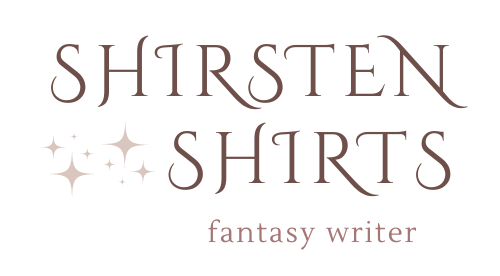Character Arcs 101
There are a lot of moving pieces that make up your book.
Plotlines and characters to keep track of, foreshadowing, compelling conflict and stakes, setting, avoiding cliches, the list goes on.
But it is my belief (and I don’t think I’m alone) that while each of these is important, the only absolutely fundamental things your book needs to be good are:
A tight plot (no plot holes, people!) that supports your Character Arc and theme
A strong, relatable theme (whether it triggers something your reader has felt/experienced or a larger idea about the world that opens their mind or heart) that is backed by your plot and your characters
A satisfying Character Arc that fits nicely within your plot and theme
That’s it. (Yes, they all tie together.)
You can then decide how to sprinkle in all of the other stuff. But if you’ve failed to capture any of these Big 3, you’re dead on arrival.
Part of the reason these are the most fundamental pieces is that they are each intertwined with the other.
Your story will influence, impact, and even be created from your Character Arc. Your Character Arc is a direct reflection of your theme. And your theme is argued through your story.
If you’re looking for advice on cinching together a steel-tight plot, start with story structure. But for now, let’s focus on Character Arcs.
Character Arcs are complex within themselves.
You can’t just describe a crotchety grouch in the first few chapters and then magically transform him into a compassionate and open prince in Act 3. You have to earn it.
Note: While there exist negative Character Arcs, in which the protagonist slowly declines throughout the story (think Walter White in Breaking Bad), as well as flat Character Arcs, in which the protagonist pretty much stays the same (think Captain America, our steadfast, lovable hero), in this post we will be focusing on positive Character Arcs, in which the protagonist grows and changes for the better.
But it starts with a simple sentence about your protagonist. Here it is:
All he/she wants is... But what’s actually important is...
Let’s break that down. Your protagonist is starting at Point A. By the end of the story, they will have arrived at Point Z. These are the most important markers to get straight. You want to have a solid idea of where your character is heading. Then you can think about how the story works to change them.
Here are some examples:
The Social Network: All Mark Zuckerberg wants is to prove himself. But what’s actually important is to treat the people who care about him with dignity.
Throne of Glass: All Celaena wants is her freedom. But what’s actually important is to protect the people she cares about, as well as the people who cannot protect themselves.
Harry Potter and the Sorcerer’s Stone: All Harry wants is to escape his bullies. But what’s actually important is to recognize where his strength actually comes from (love).
Howl’s Moving Castle: All Sophie wants is to have an adventure. But what’s actually important is to accept love from others.
Jane Eyre: All Jane wants is love and belonging. But what’s actually important is to stand strong in her truth (and to love and accept (belong to) herself).
Toy Story 2: All Woody wants is to keep things the way they are. But what’s actually important is to accept change and enjoy things while they last.
A Pinch of Magic: All Betty wants is to travel the world and explore. But what’s actually is important is to appreciate her family and her home.
Beauty and the Beast: All Belle wants is an adventure. But what’s actually important is to help change people with love.
Zootopia: All Judy wants is to be a cop. But what’s actually important is to respect others and let go of her own prejudices.
These are examples I compiled from stories I have examined in my own research. It may be helpful for you to complete this exercise with some of your own favorite stories.
Here are the pieces you need to complete it.
The Desire Vs. The Need
In the opening chapters of a book or the opening scenes of a movie, you’ll notice that it becomes abundantly clear what the protagonist wants.
In You’ve Got Mail, all Kathleen Kelly wants is to work in her mother’s book store. It’s a way for her to feel connected to her deceased mother. In Star Wars: A New Hope, all Luke Skywalker wants is to escape Tatooine.
But as the story progresses, those desires are challenged. They become complicated. They encounter obstacles. And maybe, in the end, the protagonist realizes it’s not what they wanted after all.
Whether or not that’s the case, they have to come face-to-face with the thing they need. (Because gaining their need is ultimately the only way to get what they want.)
Psst: In the FREE Story Map, I give fill-in-the-blank templates and step-by-step examples for a bird’s eye map of your story. It includes everything I use and return to again and again in the writing process (and nothing I don’t) in order to complete a novel.
Kathleen Kelly needs to open herself up and become stronger.
She’s settled into a job and a relationship and a life that is comfortable. She’s happy. But what happens when her comfortable bubble is challenged? She has to rise up to meet it, and ends up stronger and more open on the other side.
At the end of her story, she’s writing a children’s book and knows how to fight for and, more importantly, ask for what she wants (even though she wasn’t able to hold onto it).
Instead of hiding behind a screen, she opens herself to the world. In this instance, she didn’t end up getting what she wanted at the beginning of her story. But by getting what she needed, she changed positively.
Luke Skywalker needs to believe in himself.
Funnily enough, this need is first introduced when he gets what he wants: the opportunity to leave Tatooine and train as a Jedi Knight.
But he says no! Because that belief in himself does not yet exist. In this instance, he ends up gaining his Desire only by first gaining his Need.
He can only become a Jedi and have meaningful adventures by first learning to believe in himself.
Another important thing to note is that your protagonist’s Desire is dependent on their belief, or Lie. A worldview stemming from a Wound that is harmful in some way.
The problem is, something about this belief/world outlook is wrong or misguided.
Kathleen believes the best thing for her is to follow in her mother’s footsteps. Luke believes his life will be better only if he is able to escape the confines of Tatooine.
But neither of those things are what they need. (To become stronger as a person and to believe in himself, respectively.)
It is only when Kathleen’s belief is challenged and her Desire threatened that she must confront her limitations and ultimately be forced to forge her own path.
Same with Luke. When his Desire is presented to him in the form of Ben Kenobi offering to take him away from Tatooine and train him as a Jedi Knight, he second-guesses himself, exposing his true Need - to believe he is capable of the adventure he so craves.
There is so much more I could say when it comes to Character Arcs (and I’m sure I will!), but for now, this is a good jumping-off point.
Hopefully, your gears are turning and you are starting to wrap your head around the complexity of creating a compelling and satisfying arc for your own character.
The fastest way to write a strong story is with an effective outline that plots your novel’s beating heart.
In Outline Your Novel, you’ll learn exactly what these beats are, why they matter, and how to outline them effectively to make your story sing.







